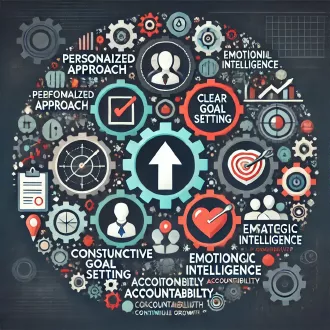Transcription Active listening. Steps to good listening
In the field of coaching and effective communication, we are faced with two crucial issues: how to conduct the conversation and how to ensure the coachee's involvement in it. This is where good listening skills and the ability to ask the right questions come in. Indispensable skills for successful coaching.
In the range of what we can see are the manifestations of body language such as posture, eye contact, gestures and other behaviors. But there is also the internal and not so obvious aspect locked in the coachee's mind, which we bring to light through our questions in order to fully understand what is going on. The ability to interpret the information is fundamental.
A good coach should be aware of both forms of listening, as both significantly influence whether you really understand what the coachee has to say. There are several things you can do to increase your chances of correctly understanding what you hear.
- Focus on the present: It sounds easy but it is one of the most challenging aspects of listening. Maintain your concentration and avoid personal distractions. At this point you can do a short meditation exercise to clear your mind before the meeting. Also eliminate any possible external sources of distraction. One thing you can do to motivate your concentration in the initial moments and maintain focus is to try to identify the mood and disposition of the coachee.
- Aim to understand what you are listening to: This is achieved by minimizing the number of questions or avoiding constant replies. You should reflect on the information you are receiving, so your questions will be fewer but better directed. Coaches should pay attention to certain aspects beyond the client's words, such as the gaps between what they say and what they do.
- Consider the coachee: You can show that you value them in a number of ways such as: avoiding unnecessary interruptions; avoiding judgments; not changing the subject if they have not concluded what they were saying; and not supplementing their comments with the information you think they were going to say.
When interacting in a conversation we go through several phases, where the process of listening is the protagonist. Below we describe them briefly so that you can apply improvements in each one of them.
Listening: This is about paying full attention to what is being heard, and to achieve this you must avoid interruptions and distractions, both internal (thoughts and feelings) and external. Show that their communication is your priority.
Understand: This is where misunderstandings begin, as this phase depends on many factors such as vocabulary, culture, personal experience and any other factors that prevent us from correctly interpreting the words chosen by the other person to express themselves. If you think that the meaning of something escapes you or is ambiguous, do not hesitate to clarify it. You can paraphrase or ask them to explain what they meant, for example. This demonstrates your interest in fully understanding.
active listening




